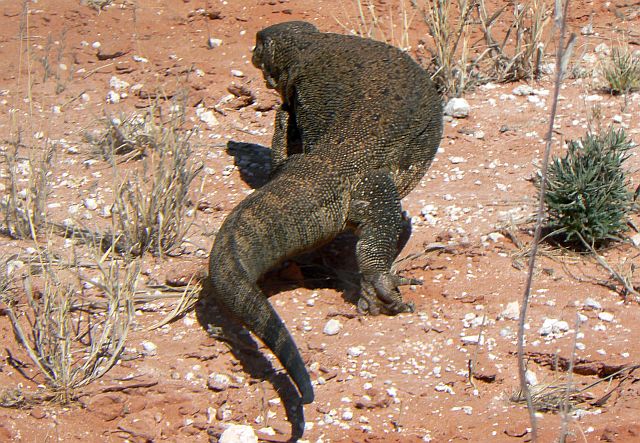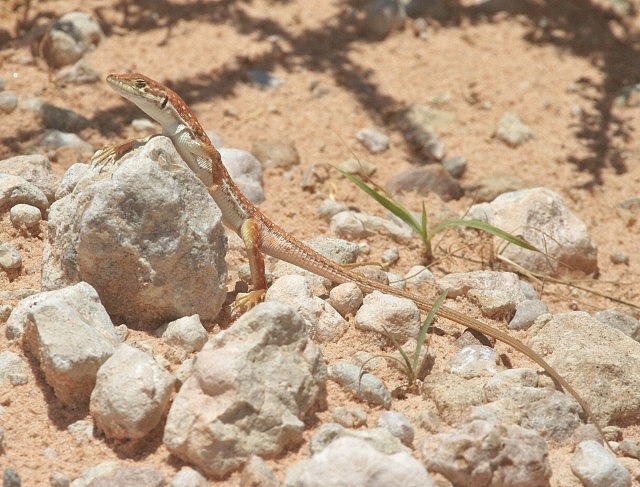Agama hispida

Description
A medium-sized agamid with adult snout-vent length in the region of 80-100 mm. Very similar to ground agama. Earhole smaller and throat dark with irregular pale blotches. Cryptic, except breeding male lvivid, metallic yellow-green. The body is very stout and depressed, covered above with moderately large, strongly keeled scales, intermixed with enlarged spinose scales, which may form indefinite longitudinal rows. Small groups of spinose scales occur on the sides of the neck and behind the ear-openings. A vertebral series of enlarged keeled scales forms a distinct dorsal crest on the nape and back. The ventral scales are also keeled. The limbs are relatively long with enlarged spinose scales above. Males have a single row of ± 10 preanal glands. In males, the tail is slightly longer than the body, but in females it is slightly shorter. Males are beautifully coloured during the breeding season. Above, they can be green, olive or brown, more or less uniform or with indistinct darker and lighter variegations. The belly is bluish-grey to turquoise with blue blotches in the gular region. Females and young males are olive to brown above with 4-5 transverse series of large squarish dark spots or crossbands that extend more faintly onto the tail and limbs. The belly is yellow-white to pale green with a dark network on the throat.
Distribution
Northern Cape Province, Western and South-Western Cape Province, Zimbabwe, Namibia and southern Angola. This species occurs in the western parts of the Northern and Western Cape, and marginally into Namibia. In the Western Cape, it is absent from the more mesic southern parts. An isolated population occurs in the northwestern Free State.
Habitat
This species inhabits semi-desert, coastal dunes and arid salt pans. Specimens take shelter in short tunnels excavated at the bases of bushes in open, sandy vegetation, and frequently use burrows in ground squirrel colonies. It is mostly encountered in the low-lying dune areas of the and lives in holes under large tufts of grass or small bushes.
Biology
This terrestrial agamid occurs in arid semi-desert areas and is particularly fond of open sandy veld. It is often found in old agricultural fields. It shelters in a short tunnel dug at the base of a bush or may occupy rodent or ground squirrel burrows. Ants and beetles are the most important items in its diet. It readily climbs onto bushes to bask. During the mating season, males display from perches such as low rocks and road verges. Like other South-African agamids, it is oviparous and females lay 7-11 eggs during early summer. This species does not keep well in captivity.
Links: SCARCE





 by Toko
by Toko


